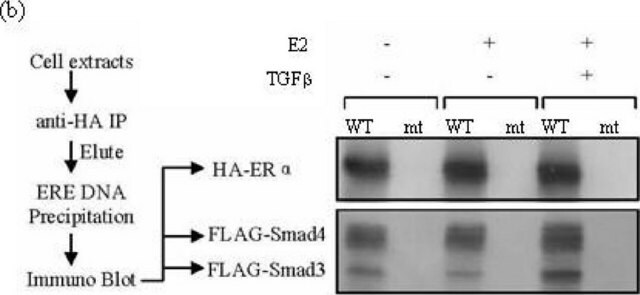P8538
Protein Kinase Cδ isozyme human
>95% (SDS-PAGE), recombinant, expressed in baculovirus infected insect cells, buffered aqueous glycerol solution
Sinónimos:
Ca2+-activated phospholipid-dependent serine-threonine kinase δ isozyme human, PKCδ human
Iniciar sesiónpara Ver la Fijación de precios por contrato y de la organización
About This Item
Número MDL:
Código UNSPSC:
51111800
NACRES:
NA.32
Productos recomendados
recombinante
expressed in baculovirus infected insect cells
Nivel de calidad
Ensayo
>95% (SDS-PAGE)
Formulario
buffered aqueous glycerol solution
mol peso
74-79 kDa by SDS-PAGE
Nº de acceso UniProt
Condiciones de envío
dry ice
temp. de almacenamiento
−70°C
Información sobre el gen
human ... PRKCD(5580)
Acciones bioquímicas o fisiológicas
PKCδ is involved in the induction of apoptosis in many cell types.
Protein Kinase C (PKC) is a serine/threonine kinase that is activated intracellularly by signal transduction pathways that produce DAG from phosphatidylinositol diphosphate (PIP2) and phosphatidylcholine (PC) through the action of various activated phospholipases. Phorbol esters also stimulate PKC. At least 11 PKC isozymes have been identified that differ in primary structure, tissue distribution, subcellular localization, response to extracellular signals, and substrate specificity. The isozymes can be grouped into three subfamilies. Members of the first family require Ca2+ and phospholipid and include PKCα, βI, βII, and γ. Members of the second family are phospholipid-dependent but Ca2+-independent, and include PKCδ, ε, η, and θ. Members of the third family are not activated by either DAG or phorbol esters and include PKCξ, μ, and ι.
Phosphorylation appears to be an important mechanism of regulation of all PKCs. PKC plays a role in the regulation of cell transformation, growth, differentiation, ruffling, vesicle trafficking, apoptosis and gene expression.
Phosphorylation appears to be an important mechanism of regulation of all PKCs. PKC plays a role in the regulation of cell transformation, growth, differentiation, ruffling, vesicle trafficking, apoptosis and gene expression.
Definición de unidad
One unit will transfer 1 nmol of phosphate to PKC epsilon substrate peptide in 1 min at pH 7.4 at 30 °C.
Forma física
Solution in 20 mM HEPES, pH 7.4; 2 mM EDTA, 2 mM EGTA, 5 mM DTT, 100 mM NaCl, 0.05% Triton X-100, and 50% glycerol.
Código de clase de almacenamiento
10 - Combustible liquids
Clase de riesgo para el agua (WGK)
WGK 1
Punto de inflamabilidad (°F)
Not applicable
Punto de inflamabilidad (°C)
Not applicable
Equipo de protección personal
Eyeshields, Gloves, multi-purpose combination respirator cartridge (US)
Elija entre una de las versiones más recientes:
¿Ya tiene este producto?
Encuentre la documentación para los productos que ha comprado recientemente en la Biblioteca de documentos.
Girdhar K Pandey et al.
Cell research, 17(5), 411-421 (2007-05-09)
Potassium is one of the major macro-nutrients essential for a number of cellular processes in plants. Low potassium level in the soil represents a limiting factor for crop production. Recent studies have identified potassium transporters that are involved in potassium
Yong Xiang et al.
Plant physiology, 144(3), 1416-1428 (2007-05-31)
Plants respond to adverse environments by initiating a series of signaling processes that often involves diverse protein kinases, including calcineurin B-like protein-interacting protein kinases (CIPKs). In this study, putative CIPK genes (OsCIPK01-OsCIPK30) in the rice (Oryza sativa) genome were surveyed
Cecilia D'Angelo et al.
The Plant journal : for cell and molecular biology, 48(6), 857-872 (2006-11-10)
Intracellular release of calcium ions belongs to the earliest events in cellular stress perception. The molecular mechanisms integrating signals from different environmental cues and translating them into an optimized response are largely unknown. We report here the functional characterization of
Bingfang Xu et al.
Developmental biology, 319(2), 211-222 (2008-06-06)
Targeted deletion of Tssk1 and 2 resulted in male chimeras which produced sperm/spermatogenic cells bearing the mutant allele, however this allele was never transmitted to offspring, indicating infertility due to haploinsufficiency. Morphological defects in chimeras included failure to form elongated
Yahui Li et al.
Molecular human reproduction, 17(1), 42-56 (2010-08-24)
Members of the testis-specific serine/threonine kinases (Tssk) family may have a role in sperm differentiation in the testis and/or fertilization. To gain insight into the functional relevance of these kinases, their expression was examined both at the mRNA and protein
Nuestro equipo de científicos tiene experiencia en todas las áreas de investigación: Ciencias de la vida, Ciencia de los materiales, Síntesis química, Cromatografía, Analítica y muchas otras.
Póngase en contacto con el Servicio técnico







